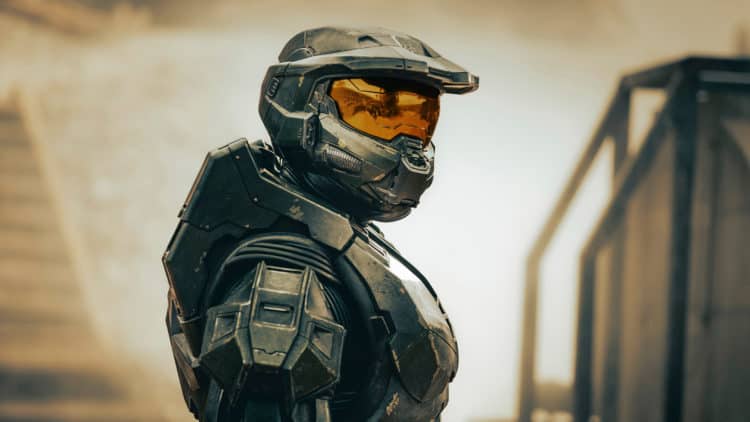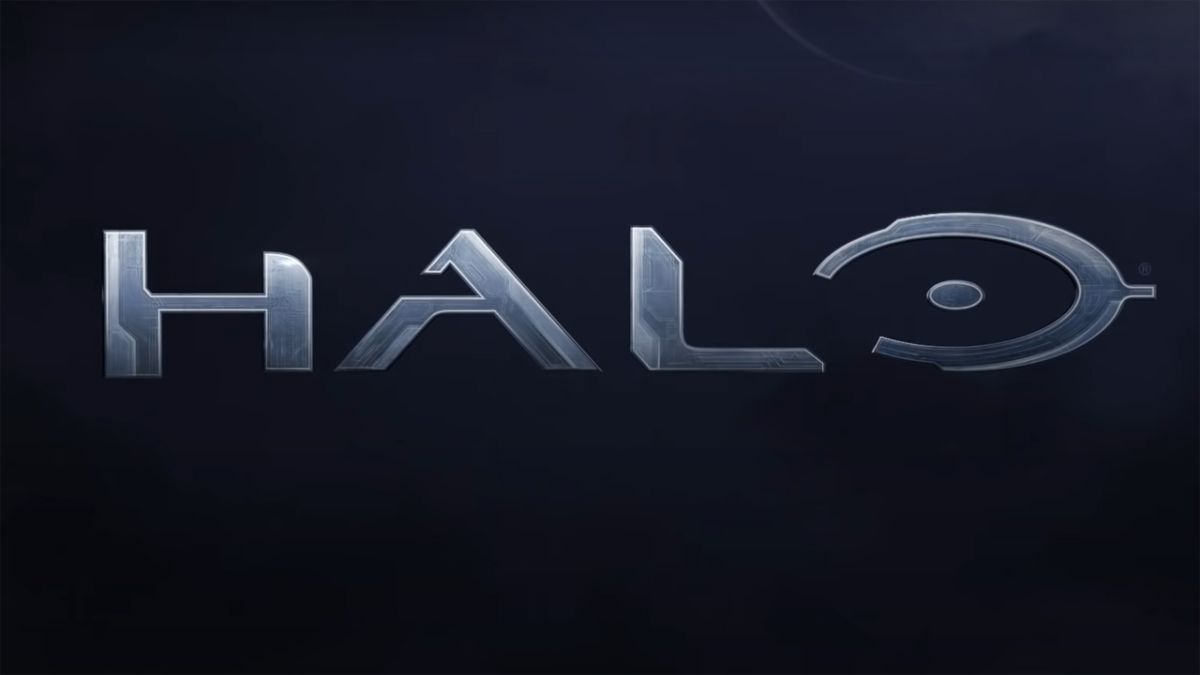NOTE: Full spoilers for this episode of, “Halo” are present in this review
Paramount+ has settled into a considerable degree of comfort with its extended Star Trek universe media by this point. The draw of a major, highly beloved sci-fi property has certainly helped this mid-tier streamer maintain at least a handful of subscribers that aren’t coming for vintage sitcoms and police procedurals (at least in its native U.S.), and it would seem that parent company, ViacomCBS wants to keep banking on sci-fi shows to try and inch Paramount+ further up the streaming chain. Thus, the platform became the unexpected home of the long-in-development Halo series, originally set up at ViacomCBS’ premium cable network, Showtime, before it migrated to Paramount+ as a presumed effort to draw in more Millennial and Gen-Z subscribers. That effort seems to have proven successful as well, at least for now, seeing as Paramount+ subscriptions among the crucial 18-49 demographic have hugely increased following the premiere of Halo’s first episode.
Clearly, there’s a lot of interest in a Halo TV series, and at first glance, Halo is pulling out all the stops to shine. With its presentation overseen by executive producer, Steven Spielberg, who has been involved with this adaptation since it started as a failed movie pitch during the 2000’s, Halo brings the Xbox video game franchise that inspired it to glorious live-action life, presenting the same vibrant, imaginative sci-fi settings as its source games. Granted, this universe does look a little cartoon-ish when it’s fully rendered in live-action, but then again, that’s also true of the Star Wars universe, so it really shouldn’t doom Halo out of the gate. Besides, it’s easy to respect such a bold commitment to echo the fantastical look and feel of Halo’s source games, something that’s tough to do on television when you’re otherwise presenting a mature-minded universe that’s rife with violence, political corruption and religious fanaticism.
So, how successful is Halo at achieving that delicate balance with its first episode? Well, it’s a little wobbly, but not fatally so. “Contact” doesn’t quite explode out of the gate as the shining vanguard for the next triumphant champion of live-action video game adaptations, but it’s competent enough to prove that Paramount+ can offer more to the 18-49 audience than modern age Star Trek. I would definitely say that Halo’s world is more inviting and engaging than its characters or storyline at this point, but even those weaker elements still tap at enough potential to indicate where Halo could eventually go, and what it could eventually achieve with its themes of political puppetmastering and the power of public myths.
When things kick off, Halo does everything it can to grab viewers with a splashy intro. The show begins on Madrigal, a human colony planet within the mid-26th Century that ends up being attacked by a group of aliens. Halo fans will of course recognize these aliens as the fanatical Covenant, the antagonist faction that you’re tasked with fighting throughout much of the Halo video game franchise. In an interesting twist for this live-action series however, the Covenant are not widely known to most of humanity at this point. I say ‘most’, because the UNSC, or ‘United Nations Space Command’, essentially the overseeing human government body for our expansion into outer space, is covering up the existence of the Covenant across its colony worlds, and instead flooding the media with focus on an insurrection by human rebels wishing to break away from UNSC control. Yeah, that hits a little differently than it otherwise would have after two years of a socially controversial series of pandemic mandates, doesn’t it?
Already, this is a fairly complex conflict to hit viewers with, but Halo’s dump of plot information doesn’t stop there. Despite an impressively action-packed debut for the Covenant’s encroaching invasion, one that sees all but one survivor mercilessly slaughtered on Madrigal (including children! Yikes!), the Covenant quickly take a back seat in favour of the UNSC’s full plate of political squabbles. It definitely helps to be familiar with the Halo games in order to understand some of these, but even then, there are some considerable deviations taken from the source material. One of the biggest involves Dr. Catherine Halsey, creator of the Spartan super-soldiers that are eventually tasked with spearheading the war against the Covenant, and her A.I. ‘clone’, Cortana. In the source games’ canon, Cortana is an A.I. cloned from Halsey’s brain, one that came together without much fuss from the UNSC. In this series however, Cortana is a secret cloning project that the UNSC keeps trying to shut down, and that Halsey keeps trying to work on in secret. Cortana isn’t even truly alive yet at this point in the show’s storyline, so we seem to be a little ways off from her becoming the Master Chief’s iconic sidekick, as she eventually is in the source games (for a time, anyway).

Then there’s Master Chief himself, played by Orange is the New Black’s Pablo Schreiber in this live-action adaptation. Visually, Chief’s TV design is pretty superb, though fans of the Halo games will need to swallow some major changes surrounding how his character is presented in this Paramount+ series. The biggest of these is easily the fact that Chief removes his iconic helmet towards the end of this first episode. In the source games, Chief’s face has virtually never been shown, presumably as a way to enhance his character as a player surrogate. Clearly though, this change makes sense for the TV series, even if Halo fans will probably react uncomfortably to it at first. On that note, Schreiber’s performance as Chief is pretty good overall (he’s probably the best performer in the show at this point, since the acting can be a bit shaky in this first episode), but his voice is a huge deviation from Steve Downes, who has always voiced Master Chief in the source games. Schreiber definitely sounds more human and less gruffly exaggerated, no doubt another necessary change to elicit a character connection for TV, but his Chief will probably be an acquired taste for established Halo fans, and that can be a problem when this Halo TV series seems to want to court established fans first and foremost.
On a more pressing note, despite almost an entire hour being dedicated to this first Halo episode, not much of note truly happens after the flashy, action-packed intro on Madrigal. There are currently too many conflicts fighting for attention, between the UNSC covering up the existence of the Covenant, Halsey simultaneously juggling Spartan oversight and the Cortana project, UNSC Captain Keyes and his daughter, Miranda (yes, they’re here too), struggling with being ordered to kill the last survivor of Madrigal, Kwan Ha Boo, a teenage girl that stows away with Chief, Kwan threatening to spread anti-UNSC propaganda for the insurrectionists, the Covenant secretly raising a human prodigy called Makee and conditioning her as an anti-human tactician (this is easily the biggest swing when it comes to reinventing Halo lore for TV), Chief coming into contact with an artifact that seems to flood him with memories, Chief trying to flee the UNSC with Kwan, Chief and Kwan being captured, and Halsey secretly ordering Chief’s ‘Silver Team’ Spartans to open fire on their own people if they try to hurt Chief. Okay, slow down, Halo! This is way too much for the first episode! Pick a lane!
This impenetrable plotting will no doubt feel inevitable to Halo fans, because Halo lore is very, very dense. Halo lore is so dense in fact that even Star Trek, which contains decades of its own sprawling lore across numerous TV shows, movies, video games, novels and comics, is given a run for its money by just how much narrative is packed into the Halo universe across several of the same mediums. It’s clear that Halo’s showrunners have a ton of story ideas as well, and that’s good, since it hints at the incredible promise that Halo contains as a TV series.
That being said however, it’s also pretty evident that the showrunners are slightly in over their heads when it comes to managing just how surprisingly complex the Halo canon has become since the franchise began on the original Xbox in 2001. This unfortunately leaves Halo’s first episode struggling to maintain a consistent sense of focus, pacing and general flow. It has several pockets of cool moments, but in terms of holding your attention, it’s less consistently successful. There are simply too many instances where viewers will awkwardly careen between sterile dialogue scenes and rollicking action beats, without much structure that ties it together in a satisfying way.
I suppose there are worse problems for Halo to have than currently feeling like too much of a good thing though. “Contact” can suffer from feeling unfocused and awkwardly presented in terms of its characterization and narrative, but it still does enough to justify the concept of a Halo TV series, albeit one that was inevitably going to suffer some significant growing pains. This is a deceptively complex universe that’s making the leap to live-action for the first time, outside of a couple of low-budget tie-in miniseries overseen by Xbox themselves, and there are certainly a few bumps in the road to start. Still, there remains some potential greatness shining just beneath the surface. It’s just a matter of whether Halo can learn to efficiently dig through its own convoluted source material before curious fans begin to write it off.

